by Parnoplast | Dec 11, 2020 | Uncategorized
Circular economy and second life
New advisory service
What is linear economy and why should we change it?
Plastics are materials used in the production of multiple products which are present in various sectors due to the wide range of properties and advantages that they have. Aimplas, in its decalogue of truths and good practices, defined 10 benefits that plastics bring to society, and insisted on the need to manage properly the waste generated in their use.
“Some of the arguments in favour of plastics consumption are the food safety, the improvement of logistics and distribution systems, the fuel saving or the reduction of greenhouse gas emissions associated with the transport of this material, since plastic is a lightweight material, it is possible to transport large quantities, which means savings in fuel and associated emissions.” – Draft Law on Waste and Contaminated Soils / Government of Spain
Many agencies and associations agree that the solution is not eliminate plastic, but provide solutions that allow the recycling and reuse of the products that are produced with these materials, and focus our efforts on a more efficient and sustainable recovery of the waste generated. The plastics industry should strive to eliminate the thought of Take, Make and Dispose, the three principles that define the linear economy. We cannot keep extracting, manufacturing, using and eliminating the natural resources and the fossil fuels, because these peter out. We should focus on a more beneficial system for the environment and the human health through the implementation of the principles of the Circular Economy.
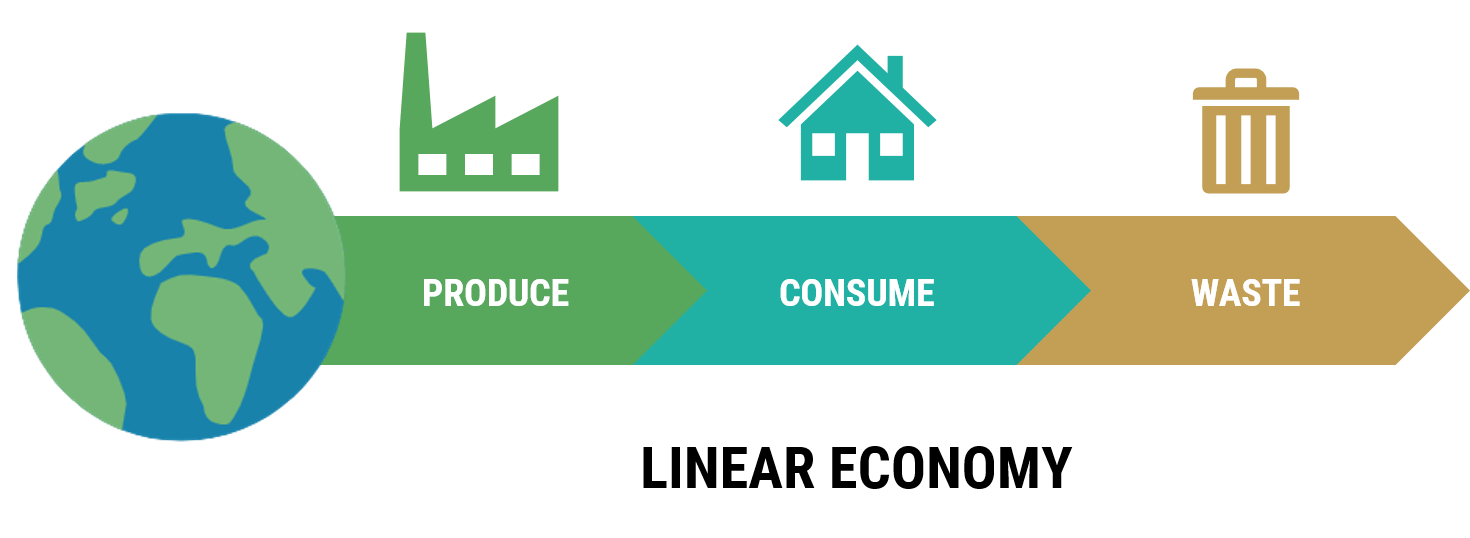
What is the circular economy and what are its objectives?
“The Circular Economy is an strategy that lays the foundations for a new plastics economy in which the design and the production of plastics and plastic products fully meet the needs of reuse, repair and recycling, as well as the development and the promotion of more sustainable materials.” – Draft Law on Waste and Contaminated Soils / Government of Spain
Increasingly, companies and agencies are deciding to implement the basis that this economy defends since it presents many advantages:
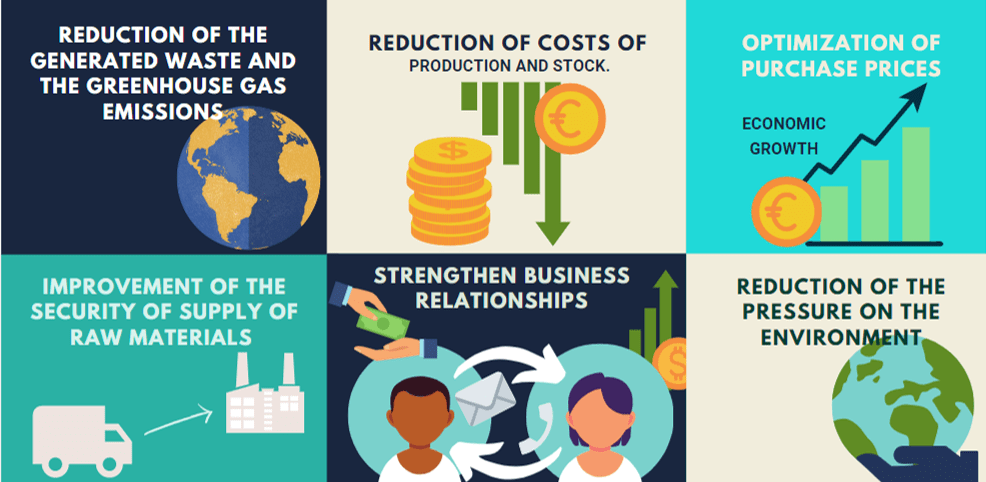
What proposal does Parnoplast offer?
From the environmental sustainability department, Parnoplast offers to their customers the counselling and the development of a policy of change towards a circular economy that is efficient with the resources available to each company and that provides a solution to the waste that they generate to reduce the environmental impact that each organization generate to minimum.
This new business model arises from the experience of more than 25 years in the world of plastics recycling, together with the knowledge of the manufacture of rigid plastic sheet by extrusion. This professional career gives us the opportunity to create an environmental sustainability department for analysis and advice, in energy and environmental terms, providing solutions that promote the useful life of products and their reuse, recyclability and use of waste as new raw material.
Moreover, Parnoplast, through its waste manager code or through a by-product contract, offers to their customers the possibility of incorporating recycled plastic from products used in the national territory in the manufacture of their packaging, thus obtaining a reduction in the base taxable special tax on non-reusable plastic containers that will enter into force on July 1, 2021.
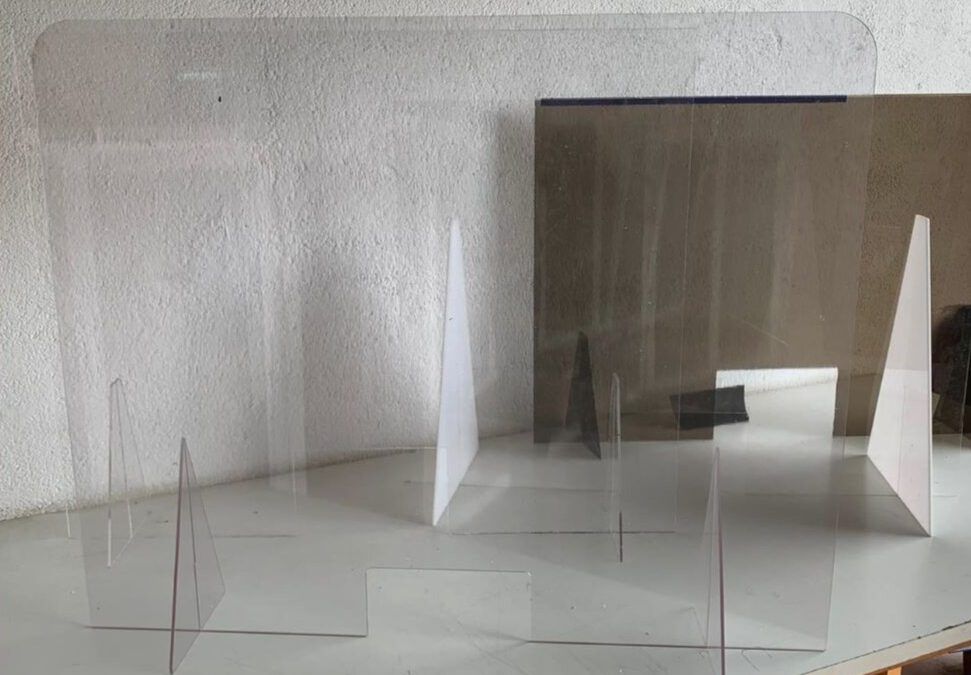
by Parnoplast | Sep 7, 2020 | Uncategorized
Highly transparent sheet to produce protection products against Covid-19
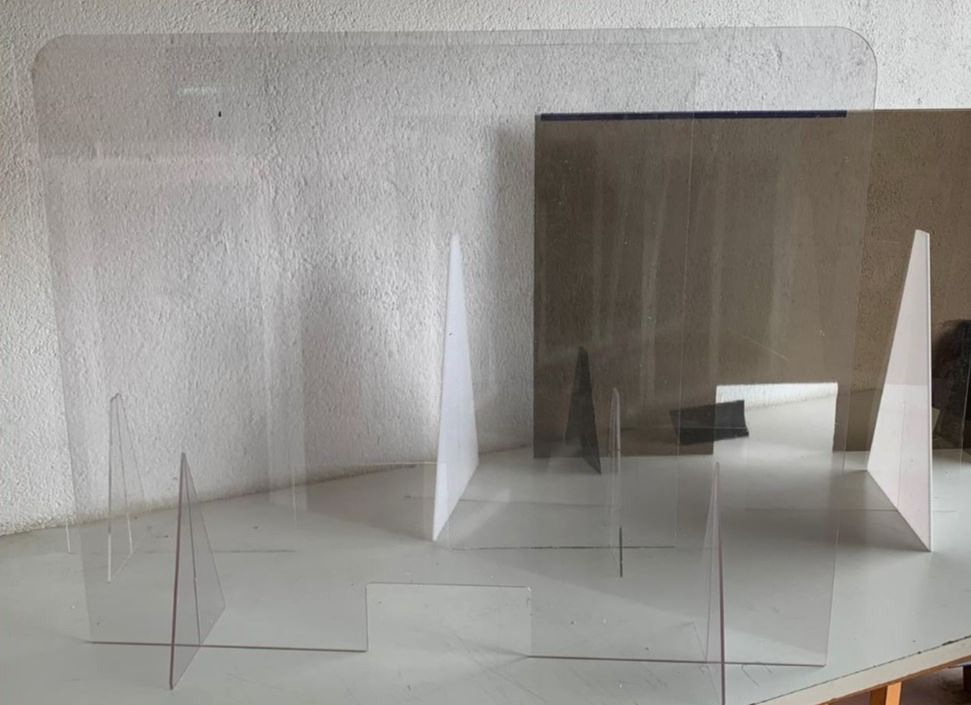
Due to the sanitary crisis caused by Covid-19, many companies have decided 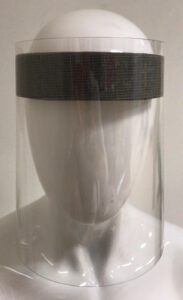 to reinvent themselves by expanding their product portfolio in items designed to reduce the chances of infection of the virus. Following this trend, Parnoplast analyzed the way of attending this increasing need by improving the performance of a product which it had previously manufactured: transparent APET sheets.
to reinvent themselves by expanding their product portfolio in items designed to reduce the chances of infection of the virus. Following this trend, Parnoplast analyzed the way of attending this increasing need by improving the performance of a product which it had previously manufactured: transparent APET sheets.
This way, the Department of Product Development studied the market requirements which demanded a product with high transparency and clarity, high resistance to impact and good resistance to chemical products. The company afterwards developed a product called High transparency sheet of PET destined to this type of application. This product was certificated by AITEX Institute as material that keep to the regulation EN 167:2001 (point 4.2.2) of the Diffusion of light.
The high transparency sheet of PET can be used in the manufacture of facial protection screens or in the manufacture of partition screens, either for interior or exterior spaces, with permanent or movable fastening systems.
These products are entirely recyclables and reusables, thus respecting the environmental philosophy of Parnoplast.
You can contact our Sales Department to ask for more information.
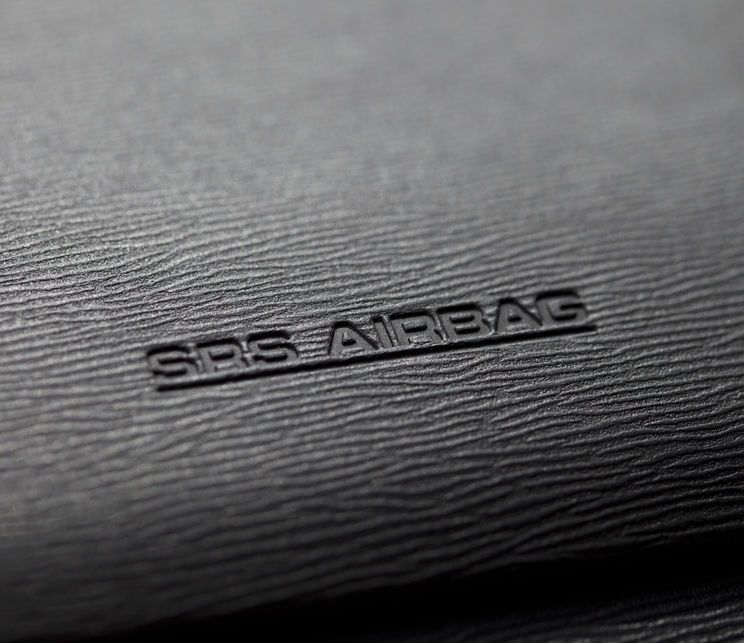
by ParnoAdmin | Dec 12, 2019 | Uncategorized
Parnoplast presents two new products: PS/TPE and ABS/TPU
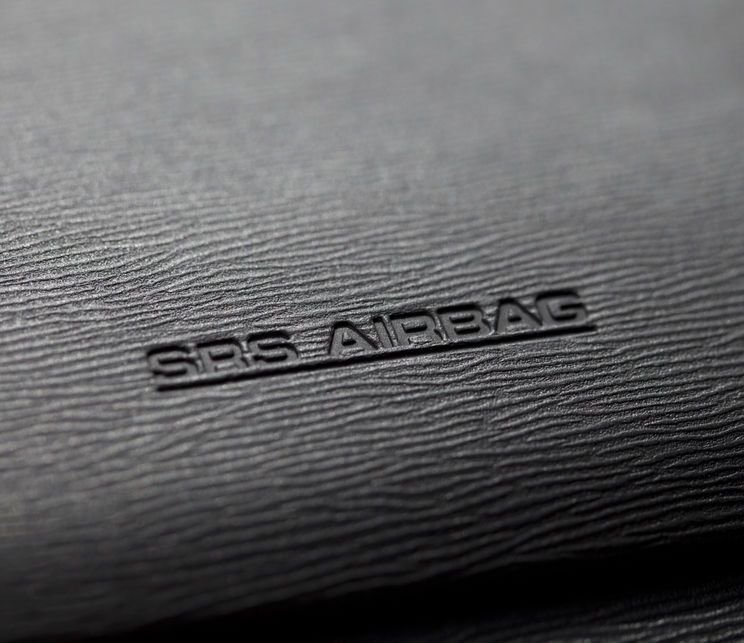 PARNOPLAST, SLU, has increased its material portfolio with the presentation of two new materials obtained by coextrusion: PS/TPE and ABS/TPU.
PARNOPLAST, SLU, has increased its material portfolio with the presentation of two new materials obtained by coextrusion: PS/TPE and ABS/TPU.
These products join the other materials that we have already been manufacturing and that we usually supply: PS, PP, PE, ABS, PET, PETG and PLA.
The coextrusion of these two styrenic thermoplastics (PS and ABS) with thermoplastic elastomers (TPE and TPU) allow to obtain a flexible surface on a rigid basis, resulting in a plastic sheet with a superior finish, which has a pleasant Soft Touch feel.
We highlight some of the characteristics of TPU or thermoplastic polyurethane:
- It has an excellent tension, high traction resistance, tenacity and resistance to wear.
- It is a material with higher resistance to oils than TPE. It is considered a material with good resistance to cold and water.
- TPU is a product easy to process that requires a low energy consumption and it is elastic and processable in molten state.
- TPU can be aromatic o aliphatic, depending on the final use of the piece obtained (ABS+TPU): whether it has to have a high resistance to hydrolysis, whether it has to be suitable for contact with food or if it must be laser marked.
Regarding the characteristics of TPE, or thermoplastic elastomer, we will point out that:
- It is a material that lends itself to repetitive stretching without this involving permanent deformations.
- TPE has good processability, excellent chemical resistance, softness and high flexibility. It can be modified with additives to modify its chemical properties.
The softness of TPE or TPU extruded on rigid thermoplastic is measured with a durometer on the Shore hardness scale. There is a usual range in TPE within the Shore A scale of 0-100 and in TPU a typical hardness within the range of 56A to 60D. The lower the durometer, the softer the material. That is, 56A is very flexible and 60D is very hard or rigid. However, TPU have a higher hardness than TPE.
The difference between TPE and TPU is, on the one hand, how smooth TPE is compared to TPU. TPE has a softer and more delicate touch, and, therefore, its resistance to abrasion is less than that of TPU. TPU has greater hardness, that is, they are rougher when they come into friction with other elements.
On the other hand, when these materials come into contact with a flame, TPE burns with a slight aroma but TPU burns with an irritating odor.
At Parnoplast we provide TPE/PS’ and TPU/PS’ sheets in any color (starting from RAL/Pantone or physical sample), with the required certifications. However, the most used color is black. Sheets are manufactured in different formats (rolls or plate) finishes (engraved or smooth and gloss or matte).
Both PS/TPE and ABS/TPU are materials widely used in pharmaceutical, cosmetic and toy industries, in stationery, packaging of parts that need “not move” and, above all, in the automotive industry. It is also used in consumer items such as kitchenware or in advertising panels.
It has a great elastic recovery capacity and it is entirely recyclable, so it is a commitment to co-responsibility with the environment.
For further information, contact our Sales Department to learn more about our products and to know prices.

by ParnoAdmin | Oct 27, 2019 | Uncategorized
Expansion of the production lines for manufacturing PETA, PETG and PLA

PRESENTATION
Parnoplast announce the expansion of its production lines with the acquisition of a new extruder that allows us to launch our PETA, PETG and PLA sheets onto the market. These materials have joined the products that Parnoplast has been offering (PS, PP, PP and PE), which are present in the most prominent industrial sectors of our society.
PET FEATURES
- PET, Polyethylene Terephthalate or polyester, is a material whose use has been growing in recent years, due to its great transparency, toughness and hardness, wear resistance and protection to UV radiation.
- It is a polymer that makes an excellent barrier to gases (very good barrier to CO2 and acceptable barrier to O2). It is resistant to heat and absorbs a low quantity of water (acceptable barrier to humidity).
- It has a very good slipping coefficient and resistance to chemical sterilization.
- PETG is a variant of PET widely used, above all, in the advertising sector (POS). This variant consists in a change on the chemical structure of the polymer, obtaining a more transparent product, with higher impact resistance and better processing.
- It is a polymer with high elasticity that allows to an easier bend processing than in other polymers such as ABS.
- It has good resistance to high temperatures (above 80ºC) and to low temperatures for long time periods.
- It is a material with great printing capacity. Fact that we improve with our corona treatment.
- PLA or polylactic acid, is an aliphatic polyester thermoplastic that come from renewal resources, such as corn, wheat, tapioca (roots) or sugar cane starch.
- It is a biodegradable material under environmental conditions such as oxygen presence, solar rays or humidity.
- This material has similar mechanical characteristics to PET, with a lower maximum temperature of continuous use.
- This material presents also a lower density than PET, meaning this a productive saving in the manufacturing of the containers.
- PLA is mainly used in single-use disposable contains such as food packaging and dishes.
Both PET, PETG and PLA are used in the manufacture of thermoformed packaging both in the food and fruit and vegetable sector, in the agricultural sector, in the pharmaceutical sector, in the cosmetic sector, in the advertising sector and in the printing industry by applying a prior corona treatment.
FEATURES OF THE MATERIAL THAT WE WILL COMMERCIALIZE
The technical degrees of PET that Parnoplast produces and commercializes, with the possibility of produce customized products, allows us to obtain PET’s sheets with specific requirements of each type of final product requested by the clients (silicone on both sides, antiblocking, UV protection, etc.).
At Parnoplast, we provide materials suitable for food contact and we offer the possibility of applying corona treatment to our PET’s sheets, thus improving the adhesion of inks, adhesives, coatings and laminates on its surface.
Our PET’s sheets are entirely reusable and recyclable, and can be produced with 100% recycled material (R-PET), with a percentage of recycled material (monomaterial in layers A/B/A) or in first quality for applications in which is requested, adapting to the needs of the final consumer, obtaining packaging as sustainable as possible.
One more time, our commitment to circular economy, leads us to offer a transformation service of our customers’ plastic waste, thus helping to reduce their purchase costs and collaborating with the care of our world.
For further information, contact our Sales Department to learn more about our products and to know prices.
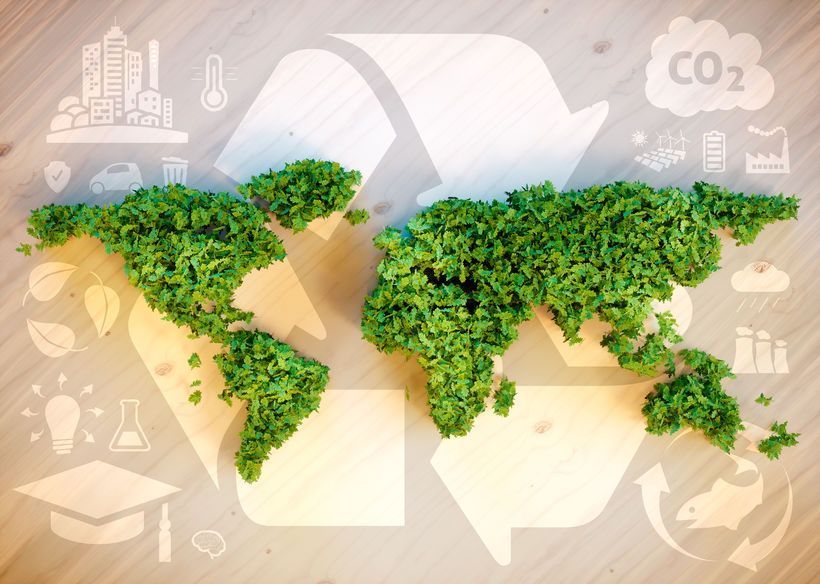
by ParnoAdmin | Jun 27, 2019 | Uncategorized
Sustainable options of Parnoplast
 At this time of environmental challenges for the plastic industry, sustainable development responses are needed, responses that we find mainly in the field of innovation and that allow us to collaborate actively making an intelligent and sustainable planet.
At this time of environmental challenges for the plastic industry, sustainable development responses are needed, responses that we find mainly in the field of innovation and that allow us to collaborate actively making an intelligent and sustainable planet.
Since its beginnings, Parnoplast take responsibility for caring for environment through initiatives developed by our teams, trained and involved in order to achieve the change towards excellence in this care.
To achieve this, we take into account the needs raised by our customers in direct relation to the end uses of the products they manufacture.
In response, Parnoplast:
- We manufacture plastic products with raw materials entirely recyclables.
- Our suppliers offer for each of their products the traceability of guaranteed provenance, both post-industrial and post-consumer origin. This will depend on the application for which they are intended, thus obtaining the highest quality result for each final use.
- At Parnoplast, we offer the possibility of formulating our plastic sheets with a percentage of recovered material, this percentage depending on the requirements of each project, thus improving costs and providing a final product that complies with a commitment to sustainability.
- We present our Ecoparno products, a reference that refers to our sheets made with degradable materials.
The degradation of plastic materials naturally takes a long time period and, sometimes, the final location of these plastics causes the accumulation of plastics on the nature.
Ecoparno products were designed with the necessary chemical modification that allow them to accelerate their own degradation process, achieving a reduction of approximately 10 years, depending on the thickness of the sheet and the final location of the manufactured parts. Acceleration occurs when the material comes into contact with the medium (action of the sun, rain, oxygen and microorganisms), generating a colony of bacteria capable of converting the polymer chain of certain thermoplastics into CO2, H2O and biomass.
EcoParno materials are produced on a polystyrene, polypropylene and polyethylene basis, thus allowing the mechanical properties of these thermoplastics to be maintained. They are not OXO-degradable materials, so they do not convert into microplastics, nor give off heavy materials to environment.
- We present our bioplastic materials, which come from natural and renewal sources. Usually, bioplastics are certificated under the regulations of biodegradability and compostability (UNE-EN 13432 and UNE-EN 14995, respectively), although not all bioplastics are biodegradables or compostable.
For further information, contact with our Sales Department to learn more about our products and to know prices.
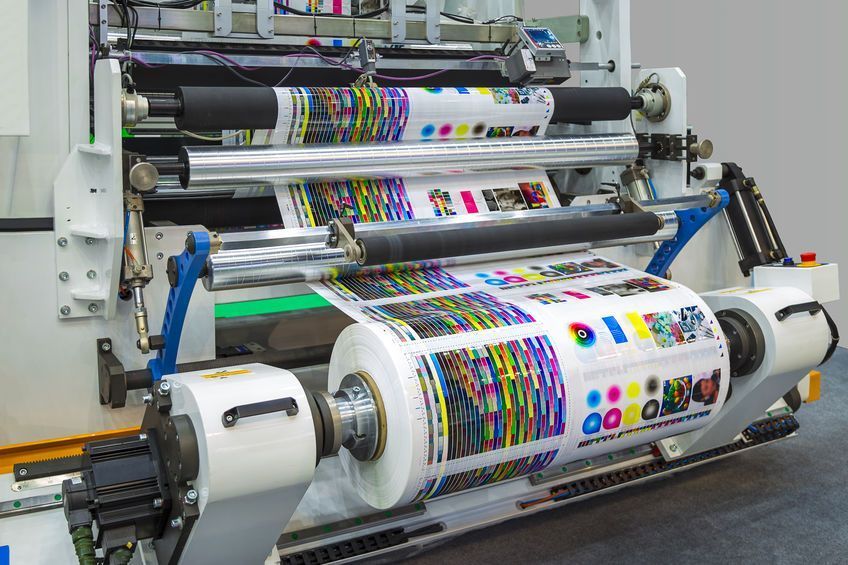
by ParnoAdmin | Jun 26, 2019 | Uncategorized
Printing plastics

PRINTING ON PLASTIC MATERIALS
One of the best ways to personalize a package is to print on it a design that reflects the characteristics of the product it contains as well as communicating the identity of the brand it represents. For this reason, different printing methods are used on plastic materials such as PS, PP or PET. The usual types of printing are: digital, offset, rotogravure and flexography.
The advantages of printing on plastics are diverse, such as obtaining products that require lower production costs by using fewer chemical substances in the process, obtaining a quick drying of the inks so that the printing speed increases, obtaining a great impression sharpness, and also print on a surface that can be chemically and mechanically modified to adapt to the end use of printed sheets.
Note that plastics allow easy post-printing processing, being able to fold, stamp, perforate, rivet, sew or laminate the product once it is printed.
To improve ink adhesion, at Parnoplast we offer the possibility of applying corona treatment on the surface of our extruded plastic’s sheets, either on one side or on both sides of the product. This treatment consists in applying a high-frequency discharge to the plastic, causing oxidation on it, thus obtaining an adequate surface tension for the correct anchoring of the printing inks.
Usually, polymers do not have porous surfaces in addition to being chemically inert with low surface tension. Therefore, this treatment is recommended when it is needed to obtain good print quality.
It is also used in lamination and coating applications with the use of adhesives.
We apply different levels of surface tension based on the printing type that our clients are going to do, being a tension of 39 dynes/cm for conventional screen printing, 40 dynes/cm for screen printing with UV inks and 42 dynes/cm for UV offset printing.
The duration of corona treatment is 3 months for UV offset printing from the date of manufacture. For the automatic feeding of the sheets it is recommended that they have been previously squared. UV screen printing is guaranteed for 6 months.
The duration of the treatment can be affected by the storage conditions (humidity and ambient temperature) causing a loss in the response of the corona treatment. Likewise, the duration of the treatment can also be affected if the impression is applied to materials that contain slip agents (such as products treated with an anti-blocking additive). For this type of products, it is recommended to consult our sales team in advance
It is important to note that the inks used in each type of plastic material are specific to each one of them.
For further information, contact our sales department to find out which product is the most suitable for your project.









 to reinvent themselves by expanding their product portfolio in items designed to reduce the chances of infection of the virus. Following this trend, Parnoplast analyzed the way of attending this increasing need by improving the performance of a product which it had previously manufactured: transparent APET sheets.
to reinvent themselves by expanding their product portfolio in items designed to reduce the chances of infection of the virus. Following this trend, Parnoplast analyzed the way of attending this increasing need by improving the performance of a product which it had previously manufactured: transparent APET sheets.







Recent Comments